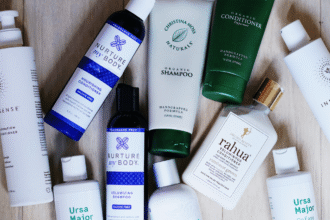Introduction to Does it Take More Energy to Keep Hair Long
Long hair often carries an air of elegance and allure, but there’s a common question that lingers: does it take more energy to keep hair long? Many people believe that maintaining longer locks requires extra effort and resources. But is this really true? As we delve into the concept of hair maintenance, we’ll uncover myths, explore the science behind hair growth, and discuss practical tips for achieving luscious tresses without feeling overwhelmed. Whether you’re rocking a pixie cut or contemplating a mermaid mane, understanding what goes into caring for your hair can make all the difference. Let’s unravel this intriguing topic together!
The Myth of Long Hair Requiring More Energy
Many people believe that having long hair demands more energy than shorter styles. This notion often stems from the idea that longer strands require extra care and attention.
However, it’s important to clarify this misconception. The time spent on maintenance doesn’t necessarily translate into increased physical or mental effort. Washing, drying, and styling can be streamlined with the right products and techniques.
Additionally, genetics play a significant role in hair growth rates and overall health. Some individuals may find their hair grows quickly regardless of its length.
Personal preference drives how much energy one invests in any hairstyle. Long hair can be just as easy to manage as short hair when approached with the right mindset and routine.
Understanding the Hair Growth Cycle
The hair growth cycle consists of three main phases: anagen, catagen, and telogen. Each phase plays a crucial role in how your hair develops over time.
Anagen is the active growth stage. It can last for years, contributing to long locks. The duration varies among individuals and depends on genetics.
Next comes catagen, which is a short transition period. Hair follicles shrink and prepare to enter the resting phase. This stage lasts only a few weeks.
Telogen marks the rest phase where hair sits in the follicle without growing. Eventually, old strands shed to make way for new ones during this cycle restart.
Understanding these phases helps clarify why some people experience faster or slower hair growth rates than others. Factors like health and nutrition play significant roles too!
Factors Affecting Hair Growth Rate
Several factors influence how quickly your hair grows. Genetics plays a significant role. If your family has a history of thick, long hair, you might have the same luck.
Hormonal changes can also impact growth rates. Fluctuations during puberty, pregnancy, or menopause may lead to varying hair health.
Nutrition is crucial too. A balanced diet rich in vitamins and minerals supports strong strands. Lack of nutrients can slow growth significantly.
Stress management can’t be overlooked either. High-stress levels can trigger hair loss or inhibit new growth altogether.
How to Boost Hair Growth Naturally
To boost hair growth naturally, start with a balanced diet rich in vitamins and minerals. Foods high in omega-3 fatty acids, like salmon and walnuts, can promote scalp health. Incorporate leafy greens for iron, which is vital for hair strength.
Stay hydrated by drinking plenty of water throughout the day. Adequate hydration supports overall bodily functions, including healthy hair follicles.
You can also support your routine with a scalp toner, which helps refresh the scalp, reduce buildup, and create a healthier environment for hair growth.
Massage your scalp regularly to stimulate blood circulation. This simple technique encourages nutrient delivery to hair roots.
Consider herbal remedies such as aloe vera or rosemary oil. Both are known for their potential benefits in promoting growth and reducing thinning.
Avoid excessive heat styling tools that can damage your strands. Opting for heat-free hairstyles allows your locks to recover while encouraging natural growth over time.
The Benefits of Long Hair
Long hair offers a multitude of styling options. From elegant updos to cascading waves, the versatility is endless. You can easily switch from casual looks to sophisticated styles for special occasions.
Another benefit is the protective aspect of longer locks. They shield your scalp from environmental factors like sun exposure and harsh winds. This added layer can help maintain healthier hair and reduce damage.
Long hair also carries cultural significance in many societies, symbolizing beauty and femininity. It can empower individuals by allowing them to express themselves more freely.
Moreover, long hair often draws attention and compliments, boosting confidence levels significantly. The flowing strands create a sense of allure that shorter hairstyles sometimes can’t match.
There’s something undeniably satisfying about growing your hair out over time—a journey filled with patience and care that can be immensely rewarding.
Maintenance Tips for Long Hair
Maintaining long hair can be a delightful challenge. Regular trims are essential, even if you’re trying to grow it out. Snipping off split ends helps keep your hair healthy and vibrant.
Invest in quality shampoo and conditioner tailored for your hair type. Look for products that nourish without stripping natural oils.
Use a wide-tooth comb to detangle wet hair gently. This reduces breakage and keeps strands intact.
Incorporating weekly deep conditioning treatments can work wonders as well. Hydration is key to preventing dryness and fostering growth.
Avoid excessive heat styling whenever possible. If you must use hot tools, always apply a heat protectant first.
Protect your hair while sleeping by using silk or satin pillowcases; they reduce friction and help maintain moisture levels throughout the night.
Consider protective hairstyles during busy days to minimize wear on your strands while looking chic at the same time.
Conclusion
Maintaining long hair does not intrinsically require more energy than shorter styles.
The myth surrounding the effort needed for long locks often overshadows essential aspects of hair care.
Understanding your unique hair growth cycle is crucial, as it plays a significant role in how quickly and healthily your hair can grow.
Adopting natural methods to boost hair growth can be both enjoyable and revitalizing.
With the right maintenance tips, managing long hair can become a seamless part of your routine.
Instead of viewing length as a burden, consider the versatility and beauty that come with longer tresses.
It’s about finding what works best for you while embracing the journey—your beautiful mane will thank you!
FAQs
When it comes to hair care, questions often arise. Here are some of the most frequently asked queries regarding energy and long hair maintenance.
Does it take more energy to keep hair long?
Not necessarily. While longer hair may require more time for washing and styling, the actual energy expenditure is minimal compared to maintaining shorter styles.
How often should I wash my long hair?
It’s typically recommended to wash your hair two to three times a week, depending on your hair type and lifestyle. Overwashing can strip natural oils from your scalp.
What affects the speed at which my hair grows?
Hair growth is influenced by genetics, diet, health conditions, and hormonal changes. These factors play a significant role in determining how quickly or slowly your locks will grow.
Is there anything I can do to make my hair grow faster?
Yes! A balanced diet rich in vitamins and minerals supports healthy growth. Regular trims also help minimize split ends while keeping your strands looking fresh.
Are there any specific products best suited for long-haired individuals?
Look for hydrating shampoos and conditioners specifically designed for dry or damaged hair. Leave-in treatments can also be beneficial in maintaining moisture levels.
By addressing these common inquiries about whether it takes more energy to keep long locks healthy, you can navigate the world of extensive tresses with confidence!

















